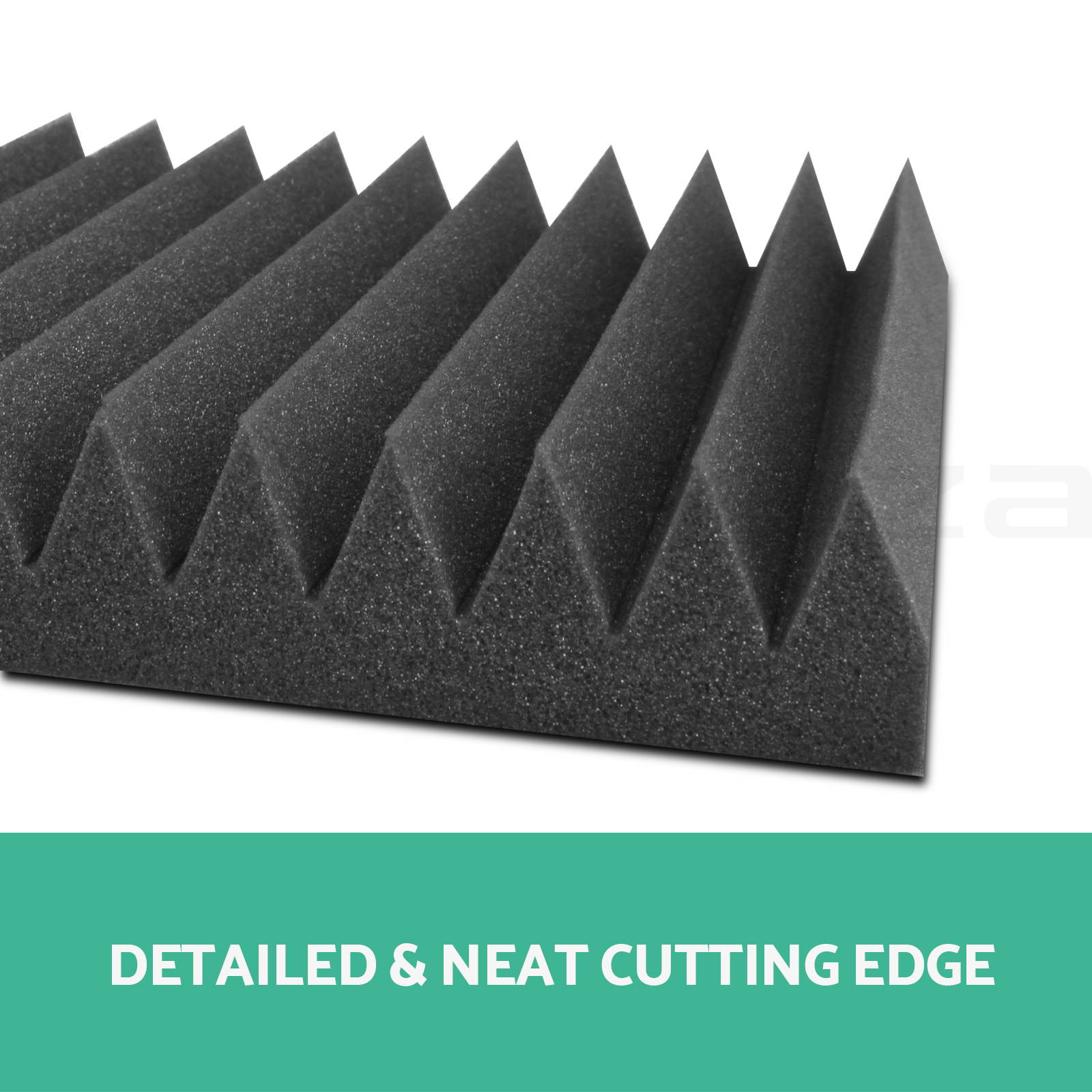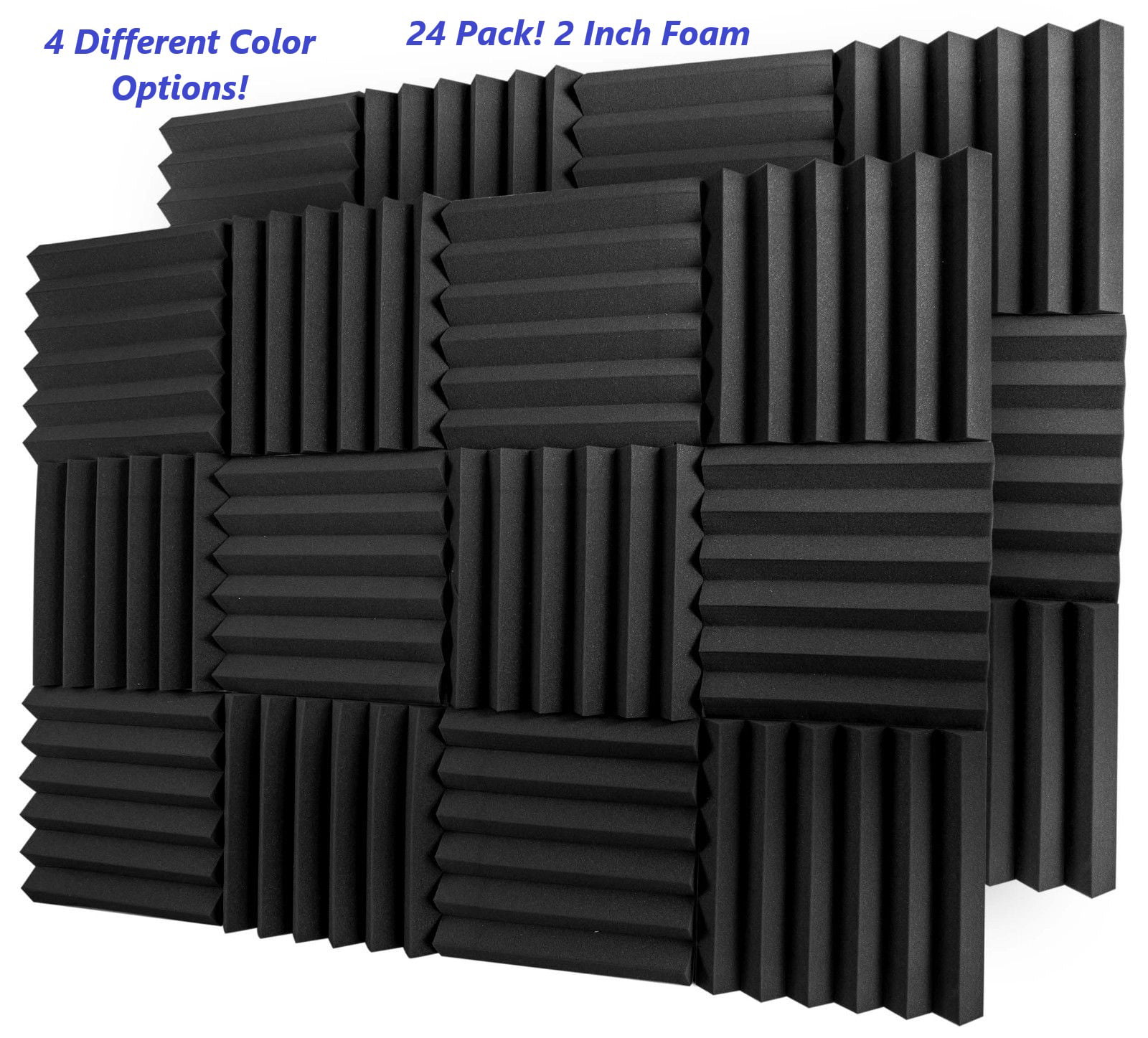
Unlike polyurethane foam, fiberglass and rock wool have health risks.
Sound studio foam professional#
Professional Studio Grade Acoustical Treatments, Create Beautiful Recording Environments!Īcoustic foam is used to remove reverberation and sound reflections, provide sound insulation industrial and domestic applications suitable for sound studios.

Easy to shape and cut to size, altering won’t affect performance. Use to spot treat a professional or home recording studio, commercial or home office, rehearsal space, or home theatre.

Make Higher Quality Audio and Video Recording - Improving your audio quality instantly by reducing background noise and echo while recording your voice overs, music, interviews, podcasts, or YouTube videos. Reduce Unwanted Noise And Echo - The panels help reduce reverb, flutter echoes, undesirable acoustic reflections, unwanted noises and are best for small to medium size rooms, theater rooms, recording studios, churches, or offices. Smaller panels are easier to manipulate and fit into spaces than larger panels.Great for spot treating sound on walls in your studio or office - For use in recording studios, control rooms, Offices home studios, home entertainment theaters, Home Offices.Ħ Pack Covers 6 Square Feet - Each tile is 1 square foot of 1 inch thick acoustic wedge. For example, a 3.1 channel system requires as much as 10 acoustic foams or panels. Quality speaker setups have recommended acoustic treatments for them. You also want to factor in the type of speaker you're using. To get the best result, treat problem areas like around the speaker and your desk. You want upwards of 30% of your space to be covered, and upscale depending on how good or bad your space is for sound work. More foams provide better sound control and reduce echo and bouncing. High-quality sound productions typically benefit from more acoustic foams. This depends on the level of sound quality and controls you require for your needs. How many acoustic foam or panels do you need? Most products with high NRC have great performances. However, if you don’t find them on the product of your choice, it’s fine too. This tests for frequencies below 250 Hz, which is where most problematic frequencies fall. However, if you are after true performers, you should keep an eye out for a Sound absorption coefficient rating. The closer a product is to a whole 1, the better the absorption. The values of measurement range between 0, and 1. NRC means Noise Reduction Coefficient, and it is the measure of how effective acoustic foams are at sound absorption. It might seem tedious, but it'll pay off in the long term. Ensure you take the time to measure out your space and decide on the perfect dimensions you need for your space before you put in a purchase order. They are also safer for the walls long term. Smaller panels with more pieces are a better option for home studios since they are easier to remove or replace. Depending on the size of your home studio or recording space, different dimension packages might be preferable. These dimensions account for the total space covered. Standard Acoustic foams are sold in packages of 6, 12, and 24 pieces at the following dimensions:ġft, 2ft, and 2ftx4ft. Thicker acoustic foams provide better frequency absorption, but 2" is enough for most people when it's paired with excellent Bass traps. Most panels range from 2" to 4", with 2" being the industry standard.


What factors should you look out for when buying an acoustic foam? ThicknessĪcoustic panels are available in a variety of thickness options. Each produces a unique acoustic profile, but to most professionals, it's not substantial enough to inform a purchase decision. You will typically find pyramids, egg crates, and wedge tile formats. The main characteristics that set most acoustic foams apart are the pattern printed on top of them. What are the types of acoustic foams or panels?Īcoustic wedges are more or less made from the same material: polyurethane foam. In this guide, we’ll be breaking down the essential features, and covering everything you need to know about acoustic foams. If you’re new to home recording, then some of the products we’ve listed might seem nearly identical. They provide excellent sound cushioning, removing echoes and reverb from your audio profiles, and overall improving the quality of your production. Foam panels in conjunction with high-quality Bass traps can have a marked impact on the quality of sound you can produce and record in your mini- sound studio. Whether you are a podcast host, music producer, or YouTube show host, investing in good sound treatment is essential.


 0 kommentar(er)
0 kommentar(er)
